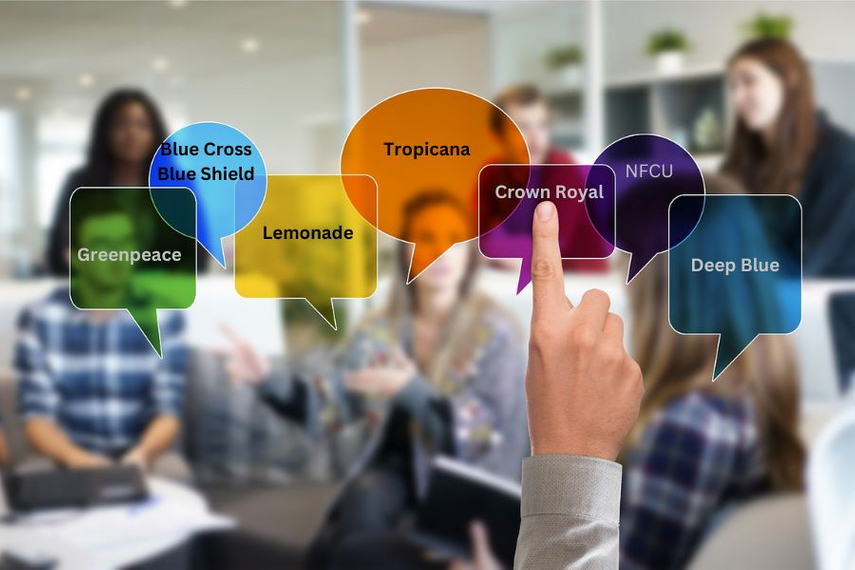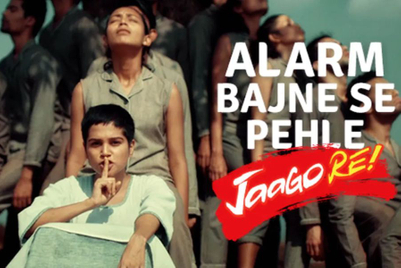
India’s advertising and marketing sector is witnessing a silent revolution with user-generated content (UGC) emerging as a key factor influencing consumer buying. On e-commerce platforms like Flipkart. or Amazon. or even brand websites and online searches, consumers, by default, look up what other consumers have to say about a particular product or brand before buying.
The rise of popularity of online influencers also emanates from the consumer need to gravitate towards peer voices rather than sponsored messaging, making UGC, a key factor influencing consumer preferences and perceptions. Highlighting the importance of user-generated content (UGC), Ramesh KP, head of marketing at South Indian Bank, notes that UGC has become a key driver of consumer behaviour. “Consumers today crave authenticity, and UGC delivers just that. Whether it’s a positive review on Google or a heartfelt testimonial shared on social media, UGC allows consumers to make well-informed decisions based on the experiences of others.”

Agrees Neeja Shah Goswami, CEO, of Whiskers India, a grooming products brand. She reasons that due to the democratisation of internet access and the rise of social media platforms, UGC has emerged as a transformative force in modern marketing strategies.
Providing some statistical evidence on the subject, Zarina Lam Stanford, chief marketing officer at Bazaarvoice, a consumer feedback solutions provider, says, “According to our 2023 Shopper Experience Index, 93% of shoppers read online reviews before buying, products with more than 50 reviews see a 4.6% higher conversion rate. Plus, ratings and reviews can increase average order value by up to 25%.”
| History of UGC |
|
As a concept, UGC is not new to humanity. The first Oxford English Dictionary may be considered the earliest UGC project by a brand. In 1879, Oxford University Press appealed to the English-reading public to read books and make extracts to compile what was going to be the ‘New English Dictionary’. Nearly after 49 years of contributions by scholars and avid readers from the UK and the United States, and the work of OUP editors, the first edition became ready in 1928. Even earlier, the compilation of the Holy Quran, carried out during the seventh century after the death of the Prophet Muhammad (PBUH), involved contributions of the Quranic verses memorised or written down by the prophet’s disciples and relatives. However, the purpose of this exercise was different, and there was no brand or organisation behind it. In modern times, the American tortilla chips brand, Doritos launched a campaign, ‘Crash the Super Bowl’ inviting consumers to create their commercials for a possible prize and recognition in the form of airing the commercial at its Super Bowl event. Considered one of the early examples of UGC, Doritos met with a resounding user response, inspiring many other brands to introduce their versions of UGC activities. So, in the same year, Coca-Cola launched ‘My Coke Rewards’ appealing to consumers to share their Coca-Cola experiences through stories and photos. Similarly, Lego launched ‘LEGO Ideas’ in 2008 asking users to submit their designs or ideas for new LEGO sets. |
Why are brands leaning on UGC
UGC’s relevance to brands comes from its inherent authenticity. Since consumers often regard it as more authentic than traditional advertising, brands are increasingly encouraging and leveraging UGC to boost engagement.

“People trust people. UGC builds credibility and fosters a sense of reliability resulting in authentic connection and higher engagement. It allows customers to negate the notion of pushed narrative,” explains Guru Mishra, senior vice president for media at RepIndia, a digital marketing company. According to Stanford of Bazaarvoice, visitors who interact with UGC are 2.4x more likely to convert, and brands using UGC see a 137% increase in conversion rates.
Providing another perspective, Ajith Mohan Karimpana, founder and CEO of Furlenco, says that UGC, often shared across social media and other platforms, boosts visibility, reach, engagement, and organic growth. By providing insights into customer preferences and behaviours, it helps brands refine their messaging and offerings.

By incorporating UGC into their strategies, brands can improve consumer loyalty, improve conversions, and cultivate a community of enthusiastic advocates according to Karimpana. Furlenco, he informs, uses customer testimonials and reviews to build trust, enhance brand image, and drive growth. "Positive feedback on furniture quality, seamless rental processes, and flexible plans reassures prospective customers and showcases Furlenco's value."
Manappuram Finance has found that incorporating user-generated content into its marketing campaigns has enhanced the brand’s relatability and trustworthiness, significantly boosting customer engagement and conversions. Sanoj Herbert, general manager and chief PRO at the financial company underpins that UGC plays a crucial role in building brand trust in the highly competitive financial services sector.
"For BSFI consumers, UGC offers authentic experiences and relatable insights from real users, aiding informed decision-making. Unlike traditional methods, it highlights user contributions that foster a sense of community, making brands more credible and inclusive,” he says.

The cost-effectiveness of UGC is another value-add offered by UGC to brand marketers. However, it needs to be handled correctly and with appropriate planning, comments Goswami of Whiskers India. The company runs incentive programmes to encourage its customers to share their authentic experiences, fostering genuine engagement. It aggregates tools like Stackla or Bazaarvoice to manage UGC across platforms. However, Goswami cautions that content moderation must be in place to ensure all user contributions align with one’s brand values.
Influencing marketing strategies
Given its relevance in consumer buying decisions, UGC can already be seen impacting how brands connect with consumers. “UGC can transform marketing strategies in major ways. As a start, with user and creator-generated content, brands can scale content creation and conversion efficiency while driving relevance and consumer trust,” comments Bazaarvoice’s Stanford.
Recent cases of successful UGC campaigns show this impact at work. RepIndia’s Mishra shares the example of Apple’s ‘Shot On iPhone’ campaign. Introduced in 2015, the campaign invited consumers across the globe to click photos on their iPhones and share them with Apple. Becoming a hit in no time, the campaign received thousands of user-clicked photos from more than 70 cities and 25 countries across the globe, thus, creating a massive buzz around the iPhone brand name.
Sharing his personal experience about launching a UGC campaign, South Indian Bank’s Ramesh KP says that UGC can be effectively used by financial institutions in their marketing. During its 95th anniversary celebrations, South Indian Bank launched a campaign that centred on collecting and publishing 94 best real customer stories. The initiative allowed the bank to generate powerful and high-impact content that was real, personalised, and deeply connected to its audience—all at virtually no cost!
Role of UGC platforms
The modern-day UGC platforms serve as intermediaries between brands and their target consumers. “A UGC platform acts as a bridge between brands and their audience, simplifying the creation, curation, and sharing of content,” explains Ramesh KP. “A great example of this is Google Business Listings, where users can easily contribute feedback.”

Bazaarvoice’s Stanford narrates a platform’s impact on brands and consumers. “UGC platforms help brands by increasing product awareness, consideration and revenue conversions, enhancing trust, and driving loyalty. Our data shows that brands using a UGC platform see an average 17% increase in sales from including ratings and reviews,” she says.
UGC platforms also provide crucial analytics capabilities. “Platforms offer built-in tools that simplify content submission, ensuring it aligns with brand guidelines while preserving authenticity,” notes Ramesh KP. Moreover, a platform’s syndication network enables brands to share reviews across different channel partners, thus, expanding the impact coverage of UGC across various consumer segments.
Mitigating the risks involved
While UGC offers several benefits to brands, it is not free of risks and challenges. Integrating UGC into marketing can be beset with moderation, brand consistency, and permissions related challenges. Its unpredictability also makes integration difficult, opines Karimpana of Furlenco.
Highlighting content moderation as the most critical concern, Mishra of RepIndia comments, “Brands often struggle with the quality of content that can be integrated into their marketing collaterals rather than the quantity of UGC generated. What goes out in social media must pass through the checks and brand guidelines.”
Agrees Stanford of Bazaarvoice. “As per our estimates, 43% of marketers find content moderation as a major challenge. Balancing UGC’s authenticity while maintaining brand standards is a delicate process that requires robust moderation systems,” she says.

Whiskers India’s Goswami explains, “A major concern is the risk to authenticity, as the proliferation of fake reviews or paid endorsements can undermine trust. The sheer volume of user-generated content can lead to content overload, making it challenging to filter high-quality and relevant material from the noise.”
Managing UGC requires special consideration, wherein quality assurance begins at the point of content generation itself, according to Manappuram Finance’s Herbert who shares his organisation’s approach in dealing with this challenge. “Our primary focus is to consistently produce high-quality user-generated content authentically. By treating each customer like family, we foster lasting relationships. This personalised approach enhances customer loyalty, increasing the likelihood of referrals and positive online/offline product reviews.”
However, Ramesh KP of South Indian Bank cautions against walking the path of excessive control and content modification traps that brands often fall into as such actions end up diluting the authenticity of user content. These ethical considerations, he says, lie at the heart of effectively using UGC in brand marketing. “Transparency and authenticity form the foundation of this approach. Altering or twisting the narrative to suit a brand’s agenda can backfire, eroding trust and alienating both the contributors and the wider audience,” he says.
Whiskers India’s Goswami outlines key ethical practices: “Implementing robust verification systems to validate the identities of content creators helps maintain the integrity of the content.” Instead of monetary rewards, offering ethical incentives like recognition, discounts, or exclusive access ensures that the content remains genuine and aligned with the brand’s values, she comments.
Stanford of Bazaarvoice highlights the importance of negative reviews in maintaining consumer trust. “Consumers want to see negative reviews for authenticity validation. Not having any negative reviews on a brand’s website is often seen as a red flag for consumers, creating potential suspicion of fake content. Recent regulations taken by governments and regulatory bodies such as FTC on fake reviews are welcome measures to ensure authenticity,” she says.
Given the high impact that UGC can have on consumer perceptions and preferences, brands in India are already looking at how UGC can be incorporated as a key component of their marketing strategies authentically. With social commerce gaining momentum, the role of UGC in brand marketing is further likely to grow in 2025, and beyond.


.jpg&h=334&w=500&q=100&v=20250320&c=1)
.jpg&h=334&w=500&q=100&v=20250320&c=1)


.jpg&h=334&w=500&q=100&v=20250320&c=1)
.jpg&h=334&w=500&q=100&v=20250320&c=1)



.jpg&h=334&w=500&q=100&v=20250320&c=1)

.jpg&h=268&w=401&q=100&v=20250320&c=1)


.jpg&h=268&w=401&q=100&v=20250320&c=1)

.jpg&h=268&w=401&q=100&v=20250320&c=1)

